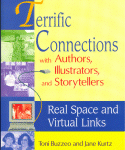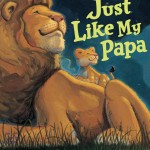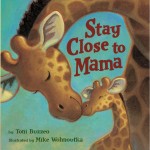 Toni Buzzeo, award-winning author, librarian and educator, has been giving great advice to authors and illustrators even long before the publication of her book, Terrific Connections with Authors, Illustrators and Storytellers: Real Space and Virtual Links, co-authored with Jane Kurtz, in 1999. Read on to find out her expert suggestions for making terrific school visit connections with librarians.
Toni Buzzeo, award-winning author, librarian and educator, has been giving great advice to authors and illustrators even long before the publication of her book, Terrific Connections with Authors, Illustrators and Storytellers: Real Space and Virtual Links, co-authored with Jane Kurtz, in 1999. Read on to find out her expert suggestions for making terrific school visit connections with librarians.
+ + +
I come to the topic of school visits wearing two stylish, but completely different, hats. As a children’s author, I have visited hundreds of schools across this country and around the world. And as a school librarian, I played host at Longfellow Elementary School in Portland, Maine to at least two authors every year for eleven years. As a result, I’ve gained a deep understanding of what it takes, as an author, to wow a librarian host. And I’d like to share my ideas with you.
1. Be clear, be prompt, be honest, and be gracious in your communications. Every school visit begins with a conversation, either in person, by phone, or through e-mail or snail mail. Whether the librarian is the one to reach out to you, or you are the first to establish contact, the impression you make in your first and ongoing communications will set the tone of the visit. Be clear about your needs. Hedging in order to land a visit and then suffering under unsuitable arrangements or honoraria will not serve your interests well and may ultimately alienate your host. Always respond promptly and honestly about arrangements as you plan. And above all, be gracious even when you feel put off by something that is suggested. It well may be that what appears to be a verbal or written mis-step was unintended. Leave room to discover this and smooth the waters.
2. Know and understand developmental ages and stages. Librarians, and all educators in the schools you visit, will appreciate your thorough understanding of the variety of developmental ages and stages within the groups of students that you meet. While some hosts may ask you to address a combined group of kindergarteners and fourth graders, or eighth graders and seniors, this is the perfect time to be clear and gracious. Explain that each of your presentations is designed with specific developmental learning stages in mind, making it necessary to avoid the combination of such disparate grades. It is essential that you do create presentations that are suitable for each age/grade range in the school, changing not only your content but also your method of delivery to suit the developmental needs and understanding of each group.
in the schools you visit, will appreciate your thorough understanding of the variety of developmental ages and stages within the groups of students that you meet. While some hosts may ask you to address a combined group of kindergarteners and fourth graders, or eighth graders and seniors, this is the perfect time to be clear and gracious. Explain that each of your presentations is designed with specific developmental learning stages in mind, making it necessary to avoid the combination of such disparate grades. It is essential that you do create presentations that are suitable for each age/grade range in the school, changing not only your content but also your method of delivery to suit the developmental needs and understanding of each group.
3. Understand and design presentations to respond to local curriculum. Your first reaction to this advice may be, “But I’m not a teacher!” Actually, that isn’t true. When you are in a school, you are temporarily in the position of an educator. Because every school hour is  precious in this age of standards-driven education, and because in all but five states (see map), those standards are national (entitled the Common Core State Standards), it is easier now, than ever before, to become comfortable with the standards that govern educational goals and incorporate them into your presentations. Start here and then solicit help from teachers you know to refine your presentations.
precious in this age of standards-driven education, and because in all but five states (see map), those standards are national (entitled the Common Core State Standards), it is easier now, than ever before, to become comfortable with the standards that govern educational goals and incorporate them into your presentations. Start here and then solicit help from teachers you know to refine your presentations.
4. Learn and practice appropriate “behavior management” techniques. If you have taught school or led Scouts or other youth groups, you already have experience in guiding children or teens to appropriate behaviors. If not, however, learning intervention techniques will benefit you by making you comfortable in dealing with students and make you a valuable visitor, readily handling disruptive students and situations yourself and moving quickly back to your presentation. Seek out avenues for learning successful interventions such as observing veteran teachers and librarians, discussing options with educator friends, and reading articles online or in educational journals.
 About Toni Buzzeo: Working both from her colonial farmhouse in Buxton, Maine and her sunny winter nest in Sarasota, Florida, New York Times bestselling children’s author Toni Buzzeo has published 19 picture books so far, including the 2013 Caldecott Honor winning One Cool Friend. She also wears the hat of a seasoned educator. A former college and high school English teacher, Toni then became a practicing Library Media Specialist and was named the 1999 Maine Library Media Specialist of the Year. In that hat, she writes many professional books and articles, Common Core curriculum based on children’s literature, as well as teaching and promotional guides for children’s books. Learn more at www.tonibuzzeo.com
About Toni Buzzeo: Working both from her colonial farmhouse in Buxton, Maine and her sunny winter nest in Sarasota, Florida, New York Times bestselling children’s author Toni Buzzeo has published 19 picture books so far, including the 2013 Caldecott Honor winning One Cool Friend. She also wears the hat of a seasoned educator. A former college and high school English teacher, Toni then became a practicing Library Media Specialist and was named the 1999 Maine Library Media Specialist of the Year. In that hat, she writes many professional books and articles, Common Core curriculum based on children’s literature, as well as teaching and promotional guides for children’s books. Learn more at www.tonibuzzeo.com

Great post, Toni! Knowledge of developmental stages is so important for presentations. You reminded me I need to learn more about the Common Core State Standards. I’m so lucky to have your book Terrific Connections to help guide me when Feathers and Trumpets is published next spring.
Alexis, thanks for hosting this series and for all your great tips here and through SCBWI! I remember your fabulous presentation in Dunbarton, NH where I learned the importance of props and theater.
You’re welcome, Joyce! Thanks for the compliments. Wishing you all the best on the publication of your book in spring 2014!
And Joyce, as an educator, you are so well-suited to writing a Common Core Guide for Feathers and Trumpets! Thanks for the compliment, too :>
Very good advice Toni – thanks for sharing
I’m just getting started with author visits and am searching far and wide for advice. I have been a teacher, so I understand that end of the spectrum. Contacting schools to initiate an author visit is my concern at this point. I’ve been invited to visit schools, once by my granddaughter’s fourth grade teacher when my first book was launched, and the second (upcoming as of this writing) by a librarian connected with Texas Word Wrangler. Your post has been so very informative, and I’m gobbling up everything on this site as fast as I’m able. My topics have been on the writing process and I use CCS while planning my presentations.
Do you have a post on making first contact?
Hi Connie,
You ask an important but challenging question! There’s no single answer but there are many of possibilities, so let me suggest five that come immediately to mind.
1. Do several pro bono visits. Why? To get your programs finely-tuned and to give folks an opportunity to see you in action. Then, ask the librarians/teachers who are hosting you to recommend you to their colleagues. Leave some speaking brochures behind for them to share. (You DO have speaking brochures, right?) Go to my website and you can have a peek at mine.
2. Do you have friends who speak in schools? If so, ask them to recommend you at each of their visits. Make sure they have seen your programs (see above) so that they can be specific in their recommendations. And be sure they have brochures of yours to share.
3. If you have some time and cash to spend, you can send out cold-call solicitations to schools you are interested in visiting. My recommendation is to send your letter and brochure to the librarian, although in some schools it is the PTO/PTA, literacy coach, or principal. I suggest the librarian because, as the information manager at the school, he or she will get that letter and brochure into the right hands.
4. Speak at your state’s school librarian and reading conferences. You won’t get paid to do it, but you can propose one or more sessions and pay your way to the conference to speak and have those brochures handy :> You will meet LOTS of teachers or librarians.
5. And if you’re really feeling brave, submit a proposal to the national IRA conference. It’s often easier and more fun to do this with a small group of authors.